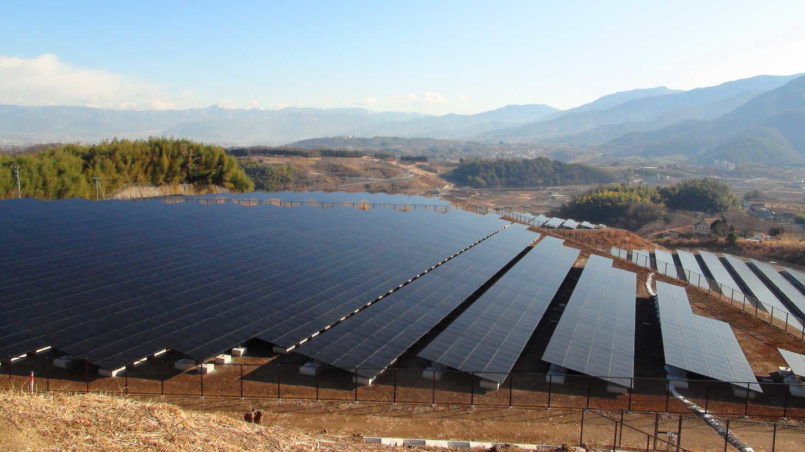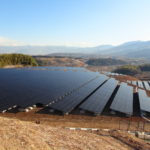New Awareness of Energy – Against the Current

The previous article focused on some of the well-known technologies that could cover human energy needs without destroying our planet. Today, we will look at the possibilities of decentralized energy production and the overall increase in energy efficiency. Again, the technologies used are by no means always “high tech”.
Home Sweet Home
Opportunities to use regenerative energies for the homestead are abound. The most practical method, as mentioned in the last article, has proved to be solar energy production. But not only electricity for domestic use can be generated by the power of the sun:
Efficient through Vacuum
These systems can be used in conjunction with a solar-driven boiler inside the building, to provide hot water and to support of the heating system.
Depending on the building type and insulation, 60-90% of the energy costs can be saved. Even in the deepest winter, there are sufficient installations to save about 20% of the required heating energy.
Cooling with the Heat
Clearly, in the summer there is a huge surplus of heat energy through the collectors. Here, too, there are ingenious possibilities to use this excess energy meaningfully.
Thus whole houses can be cooled in summer. The “Wien Energie” company, offers the so-called “Fernkälte”(remote cold), based on this principle.
Eletricity Generation by Heat
It is technically not a big challenge to convert heat energy into electrical energy. There are several possibilities:
Thermoelectric generators can also make use of the heat generated. The efficiency of these technologies is low, but irrelevant in view of the inexhaustible nature of solar energy.
Wind Energy – Wind of Change
Wind generators are part of the landscape. But even in small, these generators can accomplish great things. Wind generators for the home, the residential settlement or in cities in general, would be a further contribution to sustainable energy generation. In this area as well, prices have decreased dramatically in the last 20 years.
Newer constructions are partly no longer audible. So there is nothing to prevent the use of these devices.
Heat Pumps
The energy gained from the sun or wind can also be used to operate heat pumps. The principle here is basically very simple, and similar to that of a conventional refrigerator. These devices are capable of making ambient heat usable for heating.
Here too, cooling in the summer would be absolutely no problem, as heat pumps can be used as air-conditioning systems just as well. In the summer, they pump the heat from the building, and in winter they conduct the heat into the building. Heat pumps also play a key role in the recovery of heat from our wastewater and sewage systems.
Mini Biogas Plants
Small biogas plants could also help to produce energy in the near future. Industrial small-scale plants can produce methane from wastewater, food residues, garden waste and other biological material by adding bacteria.
This gas may e.g. be used for cooking, heating or even as an automotive fuel. The remnants of the converted material may also potentially be used as fertilizer for the garden or agriculture in general. The cycle would be perfect.
In China, such mini biogas plants are even partially subsidized by the state.
Smart Grids – The Networks of the Future
A key challenge of the future will be to use and distribute regenerative energies efficiently. So-called smart grids would be able to provide a kind of “peer to peer” network for electricity. Sensors at various node points measure the utilization of the networks, as well as the current energy requirements in the sub-areas, and regulate the current distribution automatically.
To illustrate this: if a household, for example, is currently consuming less energy than its regenerative energy sources could provide, the system recognizes this excess and makes it available to other network participants.vEven today, energy-self-sufficient communities would be possible with this technology.
It is not an absurdity by any means, to claim that in the foreseeable future, we would have to pay for the upkeep and maintenance of these energy systems only, while the actual net energy costs will move more and more towards zero.
According to recent estimates, the cost of the Iraq war – which was lead for the country’s energy resources – would be enough to convert the entire US to renewable energies almost completely, thus solving such conflicts once and for all. These dimensions of absolute madness are a blow in the face for all those who use “Wherever would we take the money for this conversion?” as an argument.
It is also a sad mirror of our society that we accept such a cynical, murderous, destructive and contemptuous system and generally perceive it as “normal”. It is our duty to strive for a better future, meaning each and every one of us within their respective possibilities.
Translation into English: Serena Nebo
Credits
| Image | Title | Author | License |
|---|---|---|---|
 |
Photovoltaic technology | Sakaori (talk) | CC BY-SA 3.0 |
